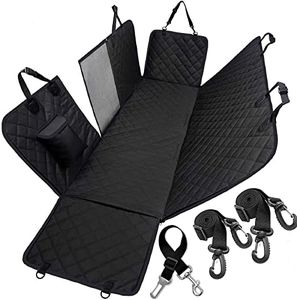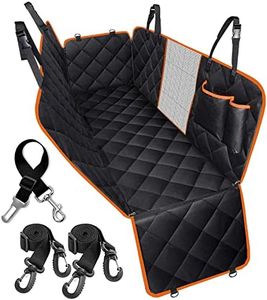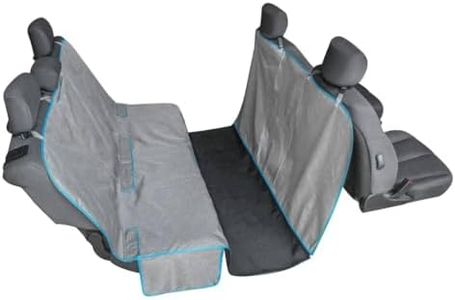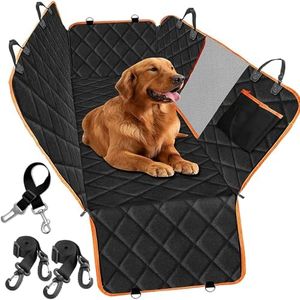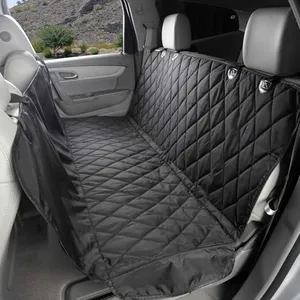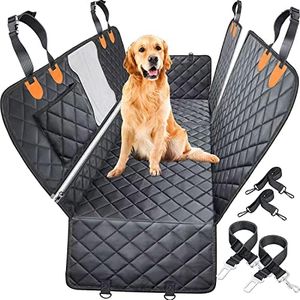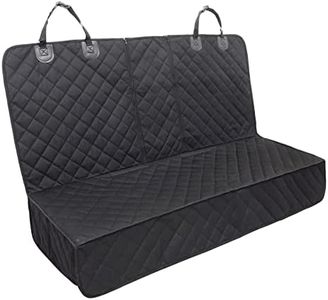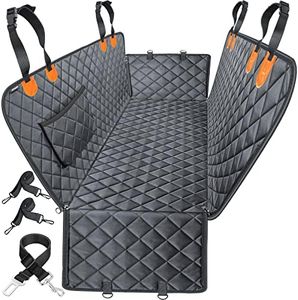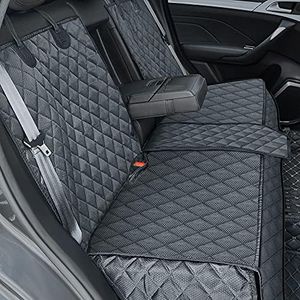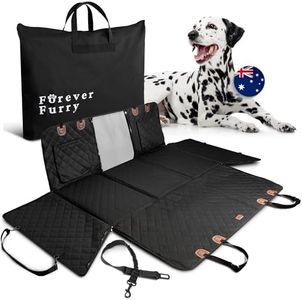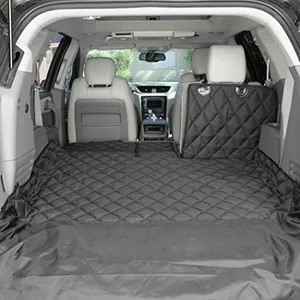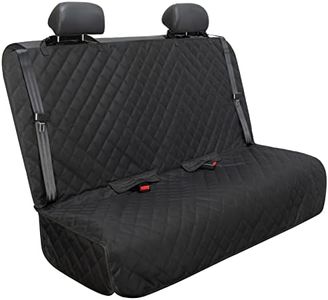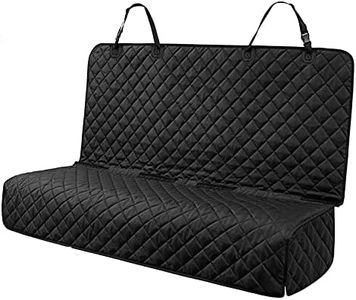We Use CookiesWe use cookies to enhance the security, performance,
functionality and for analytical and promotional activities. By continuing to browse this site you
are agreeing to our privacy policy
10 Best Pet Seat Covers
From leading brands and best sellers available on the web.Buying Guide for the Best Pet Seat Covers
Choosing the right pet seat cover is important to keep your car clean from dirt, pet hair, and scratches while making sure your furry friend is comfortable and safe. With a variety of shapes, materials, and features available, it’s important to think about your car size, your pet’s habits, and how often you travel together. Understanding the key features will help you pick a seat cover that fits your needs and offers the best protection.MaterialMaterial refers to the fabric used to make the pet seat cover. It’s important to choose a material that is durable, easy to clean, and comfortable for your pet. Common choices are polyester, quilted fabric, or waterproof blends. Basic polyester covers are light and affordable, while heavier quilted or padded materials provide more comfort and protective padding. Waterproof covers are best for pets who often get wet or muddy. Pick a material that matches your pet’s typical mess level and your cleaning preferences.
Size and FitSize and fit determine how well the seat cover will protect your car seats and stay in place. Universal covers fit most standard vehicles but may not offer perfect coverage, while custom-fit covers are designed for specific car models and provide a neater look. There are also bench, hammock, and cargo styles depending on the type of seat you want to protect. Measure your seats and choose a cover that matches the space you want to shield and the number of pets you usually travel with.
Attachment SystemThe attachment system refers to how the cover stays secured to your seat. This can include straps, buckles, or anchor points that hold the cover in place. Some options offer simple over-the-headrest loops, while others have multiple anchor points under and between seats for more stability. For energetic pets or frequent trips, choose a cover with more secure attachments to prevent slipping or bunching.
Water and Dirt ResistanceWater and dirt resistance describe how well the seat cover can protect your car from spills, wet paws, drool, or mud. Fully waterproof covers are ideal for very active or messy pets, frequent visits to nature, or rainy climates. Water-resistant covers are fine for occasional mess but may not protect against big spills. Think about your usual outings and your pet’s habits when deciding how much protection you need.
Ease of CleaningEase of cleaning is about how simple it is to wash or wipe down your seat cover. Some covers are machine washable, making cleanup easy, while others can be quickly wiped with a cloth. If your pet sheds a lot or often gets dirty, a machine-washable cover saves time and effort. Choose according to how often you expect to clean up after your pet.
Non-slip BackingNon-slip backing means the bottom of the cover has a rubberized or grippy surface to stop it from sliding around. This is especially important for larger or active dogs who move a lot during drives, as it keeps the cover in place and makes your pet feel more secure. If you have a calm or small pet, this may be less critical, but it’s a good feature for most users.
Side Flaps and CoverageSide flaps and coverage relate to how much of your seat, sides, and sometimes doors are protected by the cover. Some have extra flaps that guard the edges of your seat or door panels from scratches and dirt. If your pet likes to look out the window or moves a lot, additional coverage helps keep your whole interior clean. For quiet pets or occasional use, standard coverage may be enough.
Seat Belt and Airbag AccessSeat belt and airbag access describes if and how the cover allows you to use seat belts or pet restraints and keeps airbags free. Some covers have Velcro openings or zippers, letting you attach harnesses or car seat attachments safely. If you strap your pet in or often have other passengers, check that the cover won’t block these key features for everyone’s safety.
